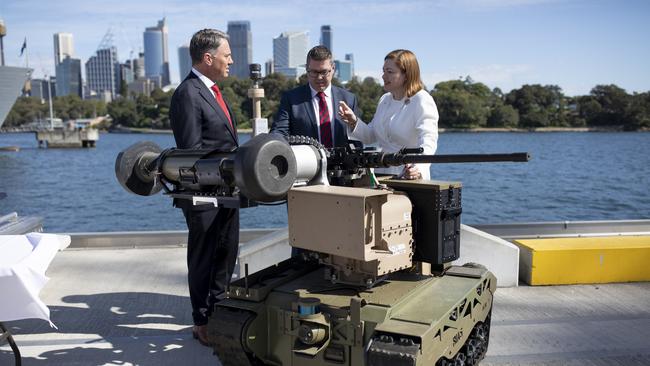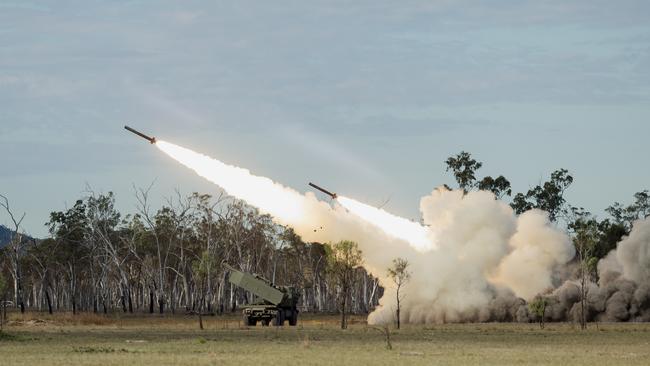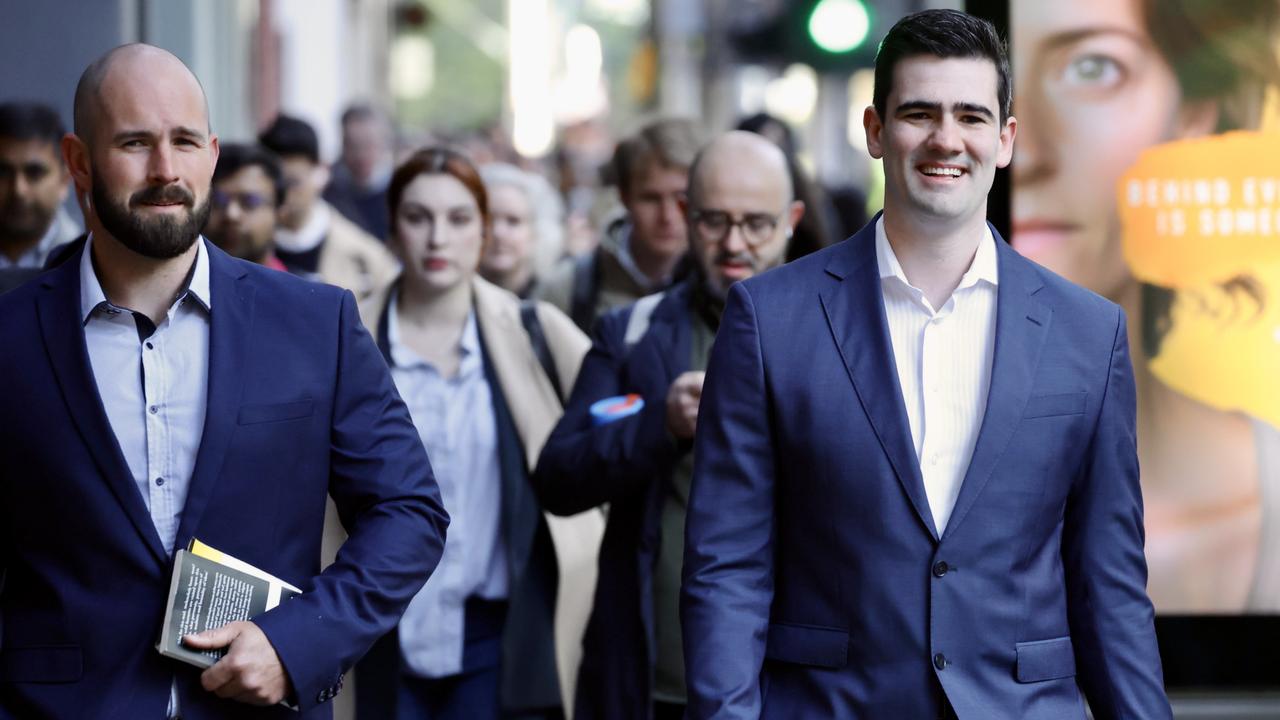Defence cuts to fund missiles, drones in plan to modernise ADF
Defence Minister Richard Marles will reveal billions in cuts to free up funds for new missiles, drones and ships, as he unveils the government’s new decade-long plan to modernise the ADF.

Richard Marles will reveal billions in Defence program cuts on Wednesday to free up funds for new missiles, drones and ships, as he unveils the government’s new decade-long investment plan to modernise the ADF.
Addressing the National Press Club, the Defence Minister will also release a new national defence strategy that’s expected to underscore a careful recalibration by the government on the urgency of strategic threats.
A year after the Defence Strategic Review declared the ADF was no longer “fit for purpose”, Mr Marles is expected to warn Australians not to be fixated on short-term deficiencies in the nation’s defence capabilities. He will call instead for a focus on the government’s longer-term plans to transform the force.
When Defence’s integrated investment program was last updated in 2020, it was worth $270bn. The navy’s promised nuclear submarines and new general purpose frigates could push the updated version beyond $350bn.
New missiles, air defence systems and armed drones, which have played vital roles in the Israel-Hamas and Ukraine-Russia wars, are set to be prioritised under the new plan.
Mr Marles has spent months accusing the Coalition of secretly de-funding Defence, arguing 30-40 per cent of its capability promises weren’t budgeted for.
This would require “tough, but necessary, decisions to divest, delay, or re-scope projects that do not support this integrated and focused force”, the Minister warned in an April 4 speech.
“This reprioritisation will enable the Government to accelerate projects that will have the greatest impact on our strategic objectives to deter any potential adversaries from actions against our interests,” Mr Marles said.

In the same speech, he rebuked commentators who lamented the ADF’s lack of short-term preparedness for “worst case” contingencies, saying such analysis “lacks wit”.
“Australia’s challenge lies in the future beyond this. And here we must invest in the next-generation capabilities the ADF needs to address the nation’s most significant military risks in the cyber, space and missile age,” Mr Marles told the Sydney Institute.
Opposition defence spokesman Andrew Hastie said Mr Marles faced a test of leadership, warning the new Defence plans “must be more than just vague language, vague promises and vague time frames”.
“There must be real money, real commitment and real leadership,” Mr Hastie said.
“Richard Marles must be honest with the Australian people about the threats and challenges we face.
“This must be matched with a meaningful increase in Defence spending and a clear strategy – real money, and a real direction. These are the metrics that count.”
The former Special Air Service captain said morale in the ADF was at an all-time low amid a recruiting and retention crisis, while the nation’s defence industry was being crippled by ministerial indecision.
“If there are further cuts to Defence, as the Minister hinted at recently, Mr Marles must be clear about what the cost will be to other capabilities, programs and local jobs.
“And he must be clear about how cutting Defence spending will support the strategy, which we are yet to see.”

US Studies Centre defence program director Peter Dean said strategic threats were accelerating but the government couldn’t create new weapons “out of thin air”.
“Some of the capabilities we’re looking at have exceptionally long lead times because everybody else in the world wants them,” Professor Dean said.
“You can’t turn over a factory to start building them tomorrow, even if you could get the companies and the countries involved to agree to licence the products.”
He said Mr Marles’ warning against focusing on short-term capability problems was “a direct reference to the importance of the United States”.
“The fallback here is you have to rely more on the US. There is nothing else we can do in the short-term because we don’t have those capabilities,” Professor Dean said.
Strategic Analysis Australia research director Marcus Hellyer said the new investment plan needed to prioritise war stocks for the ADF, even if major equipment upgrades took longer to deliver.
“The consumables need to be in there – drones, ordnance of all kinds. We’re seeing in conflicts that it’s not just sophisticated, guided weapons that make a difference, but old, dumb munitions like artillery shells.
“If they’re paired with things like reconnaissance drones, (artillery is) still very effective. And it’s no secret the ADF needs lots of fuel.”



